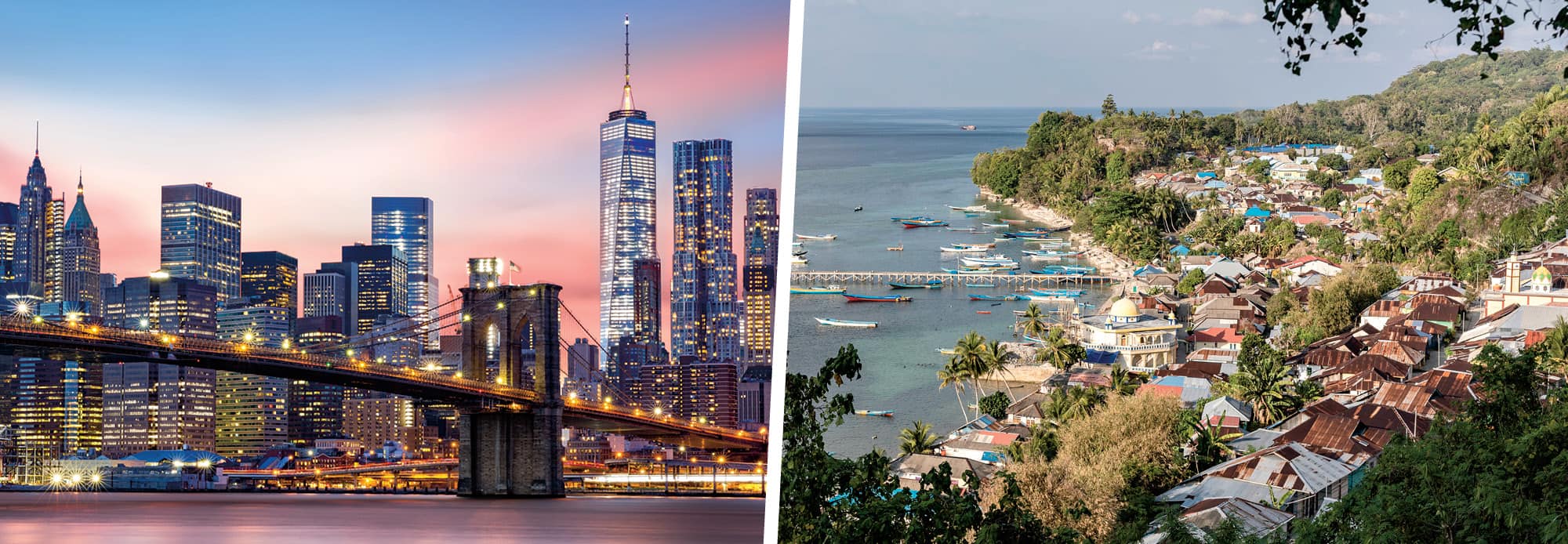The islands of Manhattan and Pulau Rhun* could hardly be more different.
Rhun, in the Banda Sea in Indonesia, has no cars or roads and only about 20 motorbikes. Most people get around by walking along its paved footpaths or up steep stairways, often toting plastic jugs of water from the numerous village wells.
Manhattan, meanwhile, is the prototypical asphalt jungle. It’s the most densely populated of New York City’s five boroughs, and nearly a million cars visit its central business district daily. Many consider it the financial and cultural capital of the world.
Back in 1667, however, things were very different. Through the Treaty of Breda, the Netherlands swapped Manhattan, then a swampy colony known as New Amsterdam, with Great Britain for the tiny island of Rhun, which the two nations had been battling over to gain control of a highly coveted resource: nutmeg.
In 1667, the tiny island of Pulau Rhun* was so coveted that the Dutch traded Manhattan for it. Some 350 years later, life in the two places couldn’t be more different.
The islands of Manhattan and Pulau Rhun are two completely different places.
Rhun is in the Banda Sea in Indonesia. The island has no cars or roads. In fact, there are only about 20 motorbikes. Most people get around by walking along its paved footpaths or up steep stairways. Water must be carried in plastic jugs from the numerous village wells.
Manhattan, meanwhile, is the opposite. It’s the most densely populated of New York City’s five boroughs. Nearly a million cars visit its central business district daily. Many consider it the financial and cultural capital of the world.
Back in 1667, however, things were very different. The Netherlands and Great Britan were fighting over the tiny island of Rhun because of a highly sought-after resource: nutmeg. The countries settled the dispute with the Treaty of Beda. The Netherlands traded the swampy colony of New Amsterdam (later known as Manhattan) to Great Britain for the island of Rhun.

